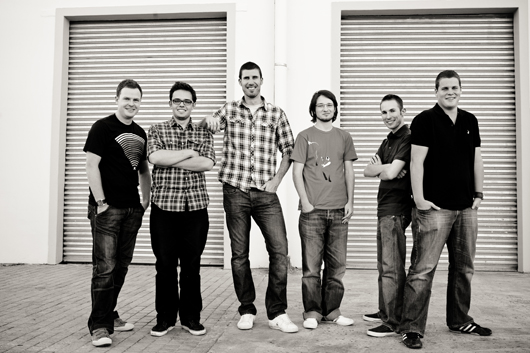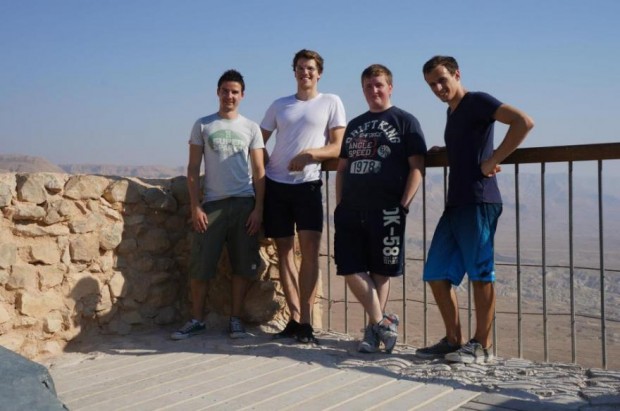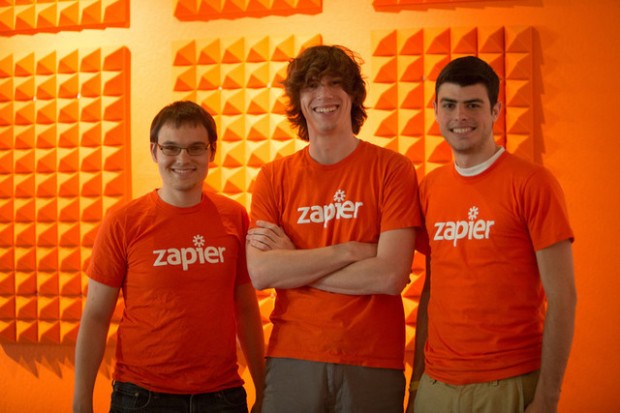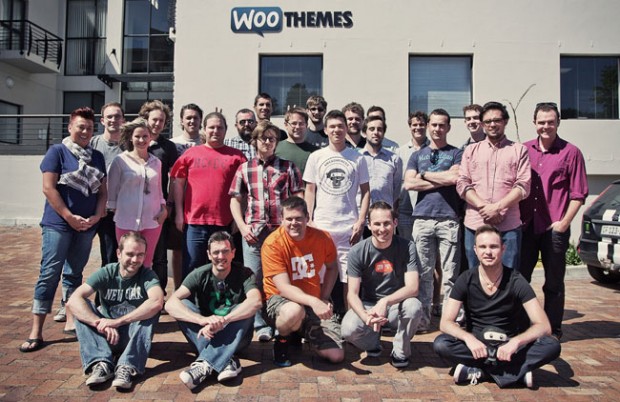 This is a guest post written by Walter Chen, a former big law firm lawyer, math and computer science graduate and more recently founder and CEO of iDoneThis – a simple team performance management system that we ourselves use at WooThemes.
This is a guest post written by Walter Chen, a former big law firm lawyer, math and computer science graduate and more recently founder and CEO of iDoneThis – a simple team performance management system that we ourselves use at WooThemes.
What I’ve admired most about WooThemes is they built a multimillion-dollar business, 100% bootstrapped, outside of a tech hub.
One of the biggest struggles for companies outside of tech hubs is the ability to easily hire talented people, but with some entrepreneurial jiujitsu, the WooThemes crew has turned that weakness into a strength. It was by being distributed themselves that the founders were able to start the company, and since then, that’s made it possible to “hire top talent from anywhere in the world.”

Continuing to make a distributed team work, though, has been one of WooThemes’s biggest tests. The worst part is that the difficulties of having a distributed team grow as your team grows. As Adii put it, “The flexibility of remote working is in our DNA. But that doesn’t eliminate the challenges of remote working.”
Here are three companies that are fighting to make remote work a competitive advantage and what they’ve done to succeed.
It is a very delicate balance to ensure that everyone who is away from the main base location feels just as much a part of the team.
Joel Gascoigne, Buffer.
As you grow your team from a purely distributed small team to a company of 10+ people, you’ll hit another crossroads — whether to get a headquarters for your office or to keep working 100% remote.

When Buffer began hitting $1.5M in annual revenue and growing its headcount, it decided to get an office in San Francisco. To make that work, the team focused on one key principle: equality.
When there’s inequality between remote work and office work, both sides resent and distrust the other. Remote workers feel cut out of the action in the office; office workers imagine that remote workers are slacking off.
Jason Zimdars from 37signals put it succinctly when he wrote that equality means that “there are no advantages for people who come into the office, [and] no disadvantages to staying home to get your work done” — and that’s vital for ensuring that there are no second-class citizens in your organization.
The Buffer team takes equality to such an extreme that they use tools meant to facilitate remote communication in the office so that everyone — both remote and distributed — can participate in the conversation. Even if people are sitting next to each other at the office, they chat on HipChat or send emails to ensure that everyone can jump in on the conversation. For Buffer, equality means treating everyone on the team in the absolute best way and going to any length to make that a reality.
It’s highly unlikely you could just pluck any random people, at any random moment in history, dispersed around the globe and expected them to build something amazing. We’ve found there are three important ingredients to making remote work, well, work: Team, Tools, and Process.
Wade Foster, Zapier.
Remote work has the reputation of being much more relaxed and casual than being in the office. You’re sitting in your bedroom and maybe you don’t even have pants on. The reality of remote work was the exact opposite for Wade Foster, co-founder at Zapier.

He found that remote teams need to be more deliberate about three aspects — people, tools and process — than co-located teams to consciously compensate for the culture that would grow organically in an office.
The first essential ingredient is who makes up the team itself. According to Wade, hiring autonomous, trustworthy people who can thrive without a physical social space is key. Second, give them the tools to thrive and do the job. For instance, the Zapier team uses Sqwiggle, an always-on video chat room that snaps to a live feed at a click of a button, to experience each other’s presence and address the lack of a physical shared space.
Lastly, distributed teams work best when they’ve put some thought into how to work best. For Zapier, this includes an all-hands support approach and a culture of daily feedback.
Purposeful process also overlaps with the decision regarding what tools to use. As builders of a great automation app that automates tasks between services, the people at Zapier are naturally big believers in automation as a way to streamline processes and tools to maintain equanimity in the team. In fact, using Zapier while building Zapier is an awesome opportunity for Wade and company to dogfood their own product.
Whereas some people might find formal processes and tools to be burdensome, Wade and his team use Zapier to automate actions to drive interoperability between their tools and processes, for instance by using Zapier to send issues and pull requests into Campfire for group discussion.
Even though we’re all over the place, we like everyone to feel like they’re part of a small team.
Mark Forrester WooThemes.
WooThemes has created a hugely successful business supporting hundreds of thousands of users — all with a relatively small team of thirty across seven countries. They’ve accomplished this by intentionally cultivating a small-team feeling of closeness, making sure everyone takes time to have fun and connect with each other, especially on their yearly WooTrip, a great way to both brainstorm and bond.

Maintaining that connected and close feeling across borders and multiple projects also requires everyone to be in the loop, a particular struggle for distributed teams. Co-founder Mark Forrester recalls how, “Back in the day, we used to be able to just jump on Skype and do a group chat — it’s not efficient or effective anymore.” Now they keep each other updated by using iDoneThis to track and circulate what everyone has done, day to day.
For WooThemes, sustaining that sense of cohesion and keeping small instead of growing for the sake of growing is how they remain a paragon of efficiency. “We place heavy emphasis on that,” Mark comments, “which is why we’re using applications like iDoneThis to really get the maximum benefit out of all of our staff without overworking them and without tiring unnecessarily.”
Unleashing the strength of distributed teams with entrepreneurial jiujitsu like WooThemes’s comes down to care and thought put into who is on the team and how to help them work at their best. For WooThemes, Zapier, and Buffer, this means paying extremely close attention to features that are so often overlooked in co-located workspaces: a conscious cultivation of cohesion and togetherness, a sense of equality, and mindfulness in how the puzzle pieces of work are put together.
About




Very nice read – some good examples here – distributed is gold indeed 😉
Thank you! Distributed is gold, and distributed is the future!
No doubt in this, thanks for the post Walter. I love our *distributed* team!
You guys are awesome!
Is a shame that WooCommerce is an application only for English speakers. The website, the forum, support, blog, etc….
English only?
It would be great to have access to all this, in Spanish.
It would also be very good for WooCommerce.
Woocommrece is great, but this is a big flaw.
Google Translate?
http://wpml.org/documentation/related-projects/woocommerce-multilingual/
English is our biggest common denominator in language, obviously. I think you’ll find it true in almost anything that spans countries, view that as you will as good or bad. 🙂
You can install the Spanish version of WordPress, and try WPML, etc… if you want your entire site in Spanish. Or use a plugin called Codestyling Localization to create a translation yourself.
Buena suerte! 😉
One of the best articles I’ve read on the Woo blog in a while. Very insightful. Bookmarked!
Thank you, Frank–I’m really glad to hear it!